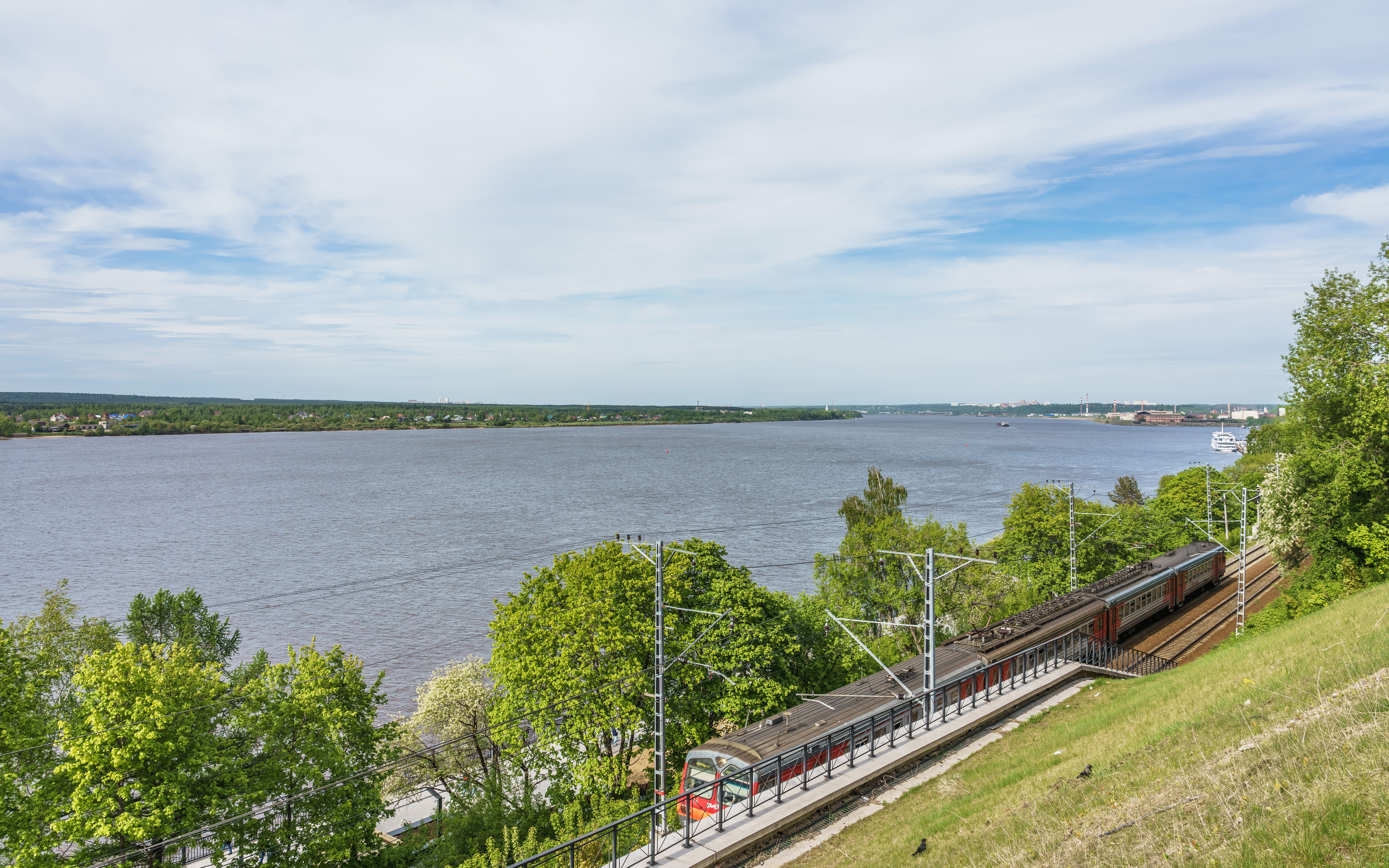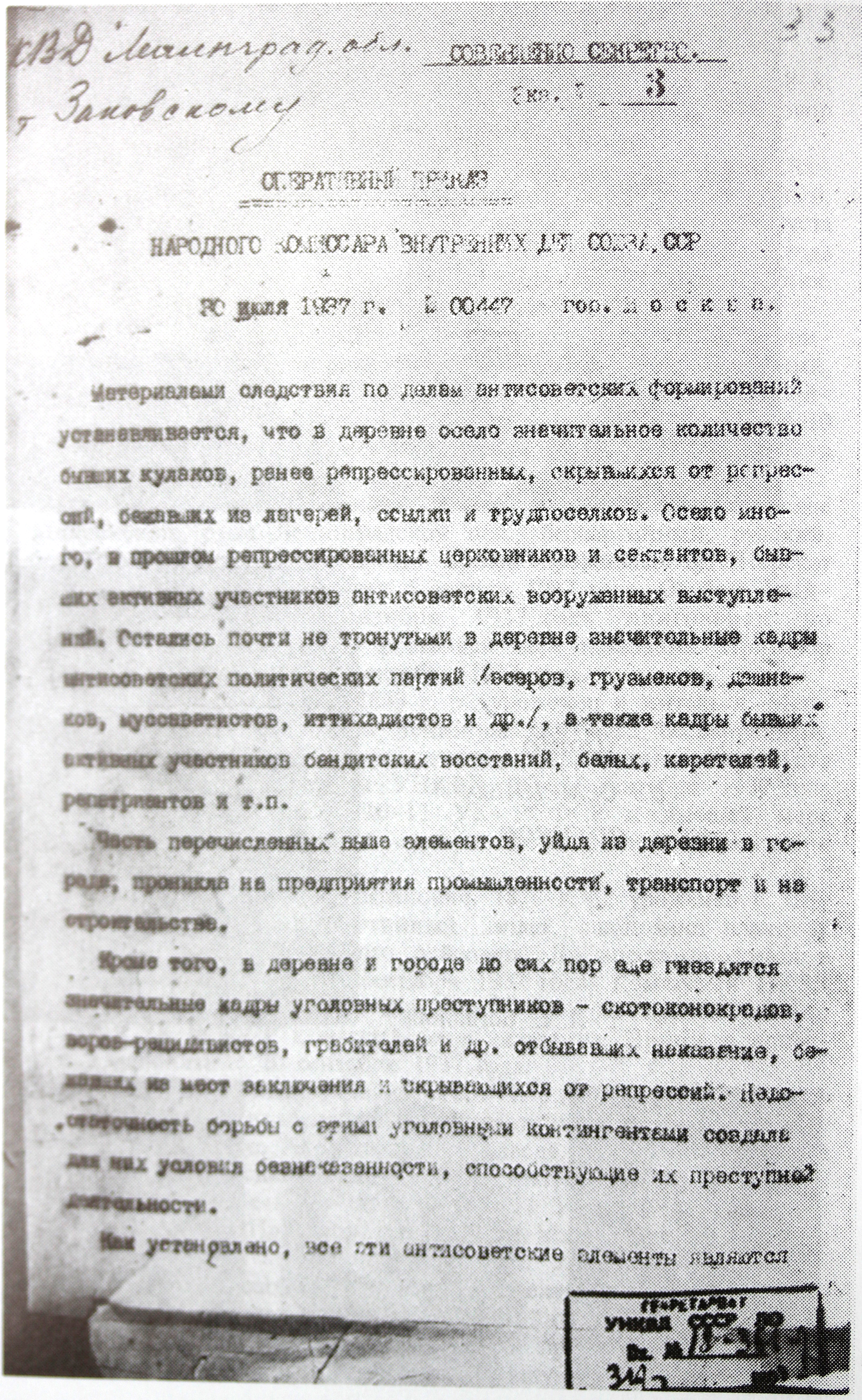|
Yegoshikha Cemetery
Yegoshikha Cemetery (russian: Егошихинское кладбище, Yegoshikhinskoye kladbishche) is the principal cemetery of the Russian city of Perm. It takes its name from the Yegoshikha River which borders it and was founded in the second half of the 18th century. In 1784, the governor of Perm and Tobolsk, Eugene Kashkin, ordered the construction of a church for burying the dead. Near the first church at the cemetery, two more were built later: the Church of All Saints and the Church of the Assumption of the Virgin. In the 1930s, executed political prisoners used to be buried in the cemetery. In 1996, the Perm branch of Memorial erected a monument to the victims of the Great Purge. The installation of the monument was sponsored by donations from Perm residents and the city and regional administrations. Notable graves * Józef Piotrowski (1840–1923), participant in the January Uprising and an enlightener * Mikhail Shuisky (1883–1953), opera singer * Dmitry Dmitr ... [...More Info...] [...Related Items...] OR: [Wikipedia] [Google] [Baidu] |
Perm, Russia
Perm (russian: Пермь, p=pʲermʲ), previously known as Yagoshikha (Ягошиха) (1723–1781), and Molotov (Молотов) (1940–1957), is the largest city and the administrative centre of Perm Krai, Russia. The city is located on the banks of the Kama River, near the Ural Mountains, covering an area of , with a population of over one million residents. Perm is the fifteenth-largest city in Russia, and the fifth-largest city in the Volga Federal District. In 1723, a copper-smelting works was founded at the village of ''Yagoshikha''. In 1781 the settlement of Yagoshikha became the town of ''Perm''. Perm's position on the navigable Kama River, leading to the Volga, and on the Siberian Route across the Ural Mountains, helped it become an important trade and manufacturing centre. It also lay along the Trans-Siberian Railway. Perm grew considerably as industrialization proceeded in the Urals during the Soviet period, and in 1940 was named ''Molotov'' in honour of ... [...More Info...] [...Related Items...] OR: [Wikipedia] [Google] [Baidu] |
Yegoshikha River
The Yegoshikha (russian: Егоши́ха, ), formerly Yagoshikha (russian: Ягоши́ха), is a river in Perm Krai, Russia, being the left tributary of the Kama. In spite of its relatively small size it is famous for its historical significance. It mainly flows across Sverdlovsky City District of the city of Perm and along the border of Motovilikhinsky City District. The source of the Yegoshikha river is in the forest area close to Lipovaya Gora and Vladimirskiy microdistricts. The river flows along the ''Yegoshikha ravine'', which divides the left-bank (relatively to Kama) part of Perm city and is crossed by two dams and a bridge (which is also called a dam by the general population). On the banks of Yegoshikha there are a lot of country cottages, ''The South Cemetery'' and ''The Yegoshikha (Old) Cemetery''. The Yegoshikha flows into the Kama close to Perm's river port. Tributaries * Ivanovka * Styx In Greek mythology, Styx (; grc, Στύξ ) is a river that forms ... [...More Info...] [...Related Items...] OR: [Wikipedia] [Google] [Baidu] |
Memorial (society)
Memorial ( rus, Мемориал, p=mʲɪmərʲɪˈaɫ) is an international human rights organisation, founded in Russia during the fall of the Soviet Union to study and examine the human rights violations and other crimes committed under Joseph Stalin's reign. Prior to its dissolution in Russia, it consisted of two separate legal entities, Memorial International, whose purpose was the recording of the crimes against humanity committed in the Soviet Union, particularly during the Stalinist era, and the Memorial Human Rights Centre, which focused on the protection of human rights, especially in conflict zones in and around modern Russia. A movement rather than a centralized organization, as of December 2021 Memorial encompassed over 50 organisations in Russia and 11 in other countries, including Kazakhstan, Ukraine, Germany, Italy, Belgium and France. Although the focus of affiliated groups differs from region to region, they share similar concerns about human rights, documenting ... [...More Info...] [...Related Items...] OR: [Wikipedia] [Google] [Baidu] |
Great Purge
The Great Purge or the Great Terror (russian: Большой террор), also known as the Year of '37 (russian: 37-й год, translit=Tridtsat sedmoi god, label=none) and the Yezhovshchina ('period of Yezhov'), was Soviet General Secretary Joseph Stalin's campaign to solidify his power over the party and the state; the purges were also designed to remove the remaining influence of Leon Trotsky as well as other prominent political rivals within the party. It occurred from August 1936 to March 1938. Following the death of Vladimir Lenin in 1924 a power vacuum opened in the Communist Party. Various established figures in Lenin's government attempted to succeed him. Joseph Stalin, the party's General Secretary, outmaneuvered political opponents and ultimately gained control of the Communist Party by 1928. Initially, Stalin's leadership was widely accepted; his main political adversary Trotsky was forced into exile in 1929, and the doctrine of " socialism in one country" b ... [...More Info...] [...Related Items...] OR: [Wikipedia] [Google] [Baidu] |
Józef Piotrowski
Józef Piotrowski (russian: Юзеф Юлианович Пиотровский, 1840–1923), also known as Joseph Yulianovich Petrovsky (russian: Иосиф Юлианович Петровский), was a participant in January Uprising and an enlightener. // Администрация города Перми. К юбилею города. Пермское ретро.''Пермский некрополь'' // Энциклопедия Пермской области. He is known as the founder of first bookshop in [...More Info...] [...Related Items...] OR: [Wikipedia] [Google] [Baidu] |
January Uprising
The January Uprising ( pl, powstanie styczniowe; lt, 1863 metų sukilimas; ua, Січневе повстання; russian: Польское восстание; ) was an insurrection principally in Russia's Kingdom of Poland that was aimed at the restoration of the Polish–Lithuanian Commonwealth. It began on 22 January 1863 and continued until the last insurgents were captured by the Russian forces in 1864. It was the longest-lasting insurgency in partitioned Poland. The conflict engaged all levels of society and arguably had profound repercussions on contemporary international relations and ultimately provoked a social and ideological paradigm shift in national events that went on to have a decisive influence on the subsequent development of Polish society. A confluence of factors rendered the uprising inevitable in early 1863. The Polish nobility and urban bourgeois circles longed for the semi-autonomous status they had enjoyed in Congress Poland before the previous insu ... [...More Info...] [...Related Items...] OR: [Wikipedia] [Google] [Baidu] |
Enlightener
The holy figures of the Eastern Orthodox Church (and of the Eastern Catholic Churches of the Byzantine Rite) have various customary saint titles with which they are commemorated on the liturgical calendar and in Divine Services. The following list explains the references: * Theologian: Has classical meaning, but only three saints are given the appellation ''Theologian'': John the Theologian, Gregory the Theologian, and Symeon the New Theologian. * * Confessor: one who has suffered for the faith but not martyred outright * Enlightener: the saint who first brought the faith to a people or region, or who did major work of evangelization there * Equal-to-the-Apostles: one whose work greatly built up the Church, whether through direct missionary work or through assisting the Church's place in society *Fool-for-Christ: a saint known for his apparent, yet holy insanity *God-bearing: title given to one of the Holy Fathers *Great-martyr: one who was martyred for the faith and suffe ... [...More Info...] [...Related Items...] OR: [Wikipedia] [Google] [Baidu] |
Mikhail Shuisky
Mikhail Grigorievich Shuisky (Russian: Михаил Григорьевич Шуйский), (13 November .S. 1 November1883 – 11 September 1953) was a opera and concert singer. He sang leading baritone roles in Austria, Germany and Russia during his 40-year career. After his retirement from the stage, he taught singing. He was born in Novogeorgievsk. He studied first at Saint Petersburg Conservatory, then at Vienna Conservatory from 1905 to 1909. He sang leading roles at the Vienna Volksoper and the Landestheater Linz (where he was known as Michael Shuisky) and had signed long-term contracts to sing in Salzburg and Hamburg before the outbreak of the First World War. When war broke out, he returned to the Russian Empire, where he completed his career. He was a leading baritone in the Theatre of Opera and Drama in Saint Petersburg; Kiev Opera and Ballet Theatre; Odessa Opera and Ballet Theatre; and the Perm Opera and Ballet Theatre. Shuisky was made an Honored Artist of Rus ... [...More Info...] [...Related Items...] OR: [Wikipedia] [Google] [Baidu] |
Dmitry Dmitriyevich Smyshlyayev
Dmitry Dmitriyevich Smyshlyayev (russian: Дми́трий Дми́триевич Смышля́ев) was a Russian historian, ethnographer and politician. He is known for the study of history of Perm and Perm Governorate.Смышляев ( B&EED)Смышляев Дмитрий Дмитриевич ( GSE [...More Info...] [...Related Items...] OR: [Wikipedia] [Google] [Baidu] |
Pyotr Subbotin-Permyak
Pyotr Ivanovich Subbotin-Permyak (russian: Пётр Ива́нович Суббо́тин-Пермя́к, 18 November 1886 in Kudymkar – 6 January 1923) was a Russian avant-garde painter, the professor of decorative painting. He was an author of more than 40 paintings and about 100 drawings.Субботин-Пермяк Пётр Иванович (Уральская историческая энциклопедия) (Энциклопедия Пермской области) Biography Pyotr Subbotin-Permyak was born in the city of |
Sergei Safronov (fighter Pilot)
Sergei Ivanovich Safronov (russian: Серге́й Ива́нович Сафро́нов; 25 March 1930 – 1 May 1960) was a senior lieutenant in the Soviet Air Defense Forces. Safronov, a fighter pilot, was shot down by a friendly surface-to-air missile while attempting to intercept Gary Powers' U-2, conducting a reconnaissance mission. Biography Safronov was born on 25 March 1930 in Gus-Khrustalny and graduated from the town's School No. 1 (later School No. 12) in 1948. He joined the Soviet Air Forces and graduated from the Borisoglebsk Military Aviation School of Pilots, serving with the 764th Fighter Aviation Regiment of the Soviet Air Defence Forces at Bolshoye Savino Airport from 1952. In the 1960 U-2 incident he and his flight leader, deputy squadron commander Captain Boris Ayvazyan were vectored to intercept Gary Powers' U-2 with their MiG-19 fighters. On their way to interception, the U-2 was shot down by S-75 Dvina surface-to-air missiles, but large pieces of t ... [...More Info...] [...Related Items...] OR: [Wikipedia] [Google] [Baidu] |


